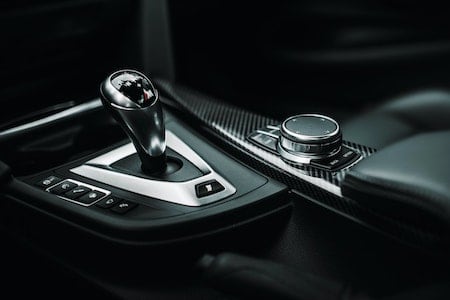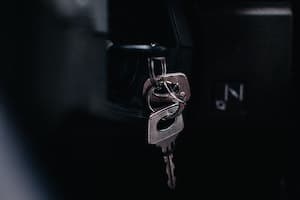My car won’t start! It surely can’t be serious enough that I must have my car towed to the shop, but how am I supposed to know why my car won’t start?! Read this and you will learn why.
What is the most likely reason for my car not to start?
The most common reason for a car not to start is a loose battery terminal connection. There are many other causes that may also be the reason your car won’t start such as a dead battery, no gas, or a bad ground. Depending on the situation and the car’s symptoms, you can solve the starting issue quickly.
The symptoms produced by your car are your best resource to determine what is keeping your car from starting. The different things that a car will do when it won’t start are caused by different problems. Is your car making noise but not turning over? Is the engine turning over but won’t start? Do the lights come on and are they dim? These are a few of the things that you should take note of and by following these indicators in our guide you will quickly have your car back on the road.
Before you call AAA read through these top reasons that your car wont start!
1. Loose Battery Terminal Connection
A loose battery terminal connection is always the first thing to look for when trying to start a car that won’t start. Check the battery connections! Any sign of corroded terminals means you should disconnect the battery cables and clean them. See my resource page for a simple cheap tool to clean battery terminals quickly and easily.
A loose battery terminal connection will allow things such as the headlights to work while at the same time preventing the starter from turning at all because of the lack of potential to pass a high current through the connection.
Simply keep a crescent wrench in your car with your jumper cables since a loose battery terminal is common, and the use of the crescent wrench to disconnect or tighten your battery terminals will come in handy undoubtedly.
Pro Tip: Twist slightly as you press the battery cable onto the battery terminal. The terminals are tapered and twisting will allow a tight secure connection to be made.
And of course do the same thing when you go to remove the cables.
2. Dead Car Battery
If your car battery is dead, you will know it by the inability to start your car or operate anything electrical in your car. The horn won’t work, the keyfob won’t be able to unlock your car, and your headlights won’t turn on.
What get’s tricky of the battery as the culprit is that although these are the symptoms when a battery is dead, the symptoms of a low battery are very similar.
The best way to test a dead battery is to keep a meter on hand to be able to check the battery voltage. If you are new to using a multimeter, do not shy away from it. It is very simple and easy to use especially checking something simple like the voltage of your car battery!
Check out my Recommended Tools Page to pick up a multimeter for cheap and be able to solve battery issues on your own.
The next best way to check a dead car battery is to get a jump start. Jump starting your car simply uses power from a battery of another car to turn your starter and get the car going!
If your car fires up, you can bet the battery was dead. Now, to determine if it could have been the alternator that went bad, read my article about Battery vs Alternator vs Starter
3. No Gas
I once saved a friend of mine from being stranded in his car with my mechanic skills. He called me up asking for some help getting his car to start. He was driving his little manual car up a hill and it suddenly died on him. So he was stuck there on a steep hill, with his car unable to start.
Before he called the tow truck, he thought he would give me a call.
Well, after a couple of questions, I found out the car was turning over, so the battery was fine.
It has no previous issues or noises before dying and when it died, sputtered and spitted for about 10 seconds before dying.
Then I new it, no more gas.
I asked him when he last added gas to it. He thought for a few seconds then laughed and realized he was very low on gas. The addition of driving up a very steep hill caused all of the gas to flow to the back of the gas tank.
Fortunately he was able to get turned around and even got the car going long enough to drive to a gas station once the car wasn’t headed uphill.
Plugged Fuel Filter
Fuel filters need to be replaced periodically because it is normal for them to get plugged and worn out over time. They are cheap and easy to replace but can cause problems that are tough to diagnose.
The best way to tell if your fuel filter is the cause of your car not starting, by the symptom is if the car will start and run for a minute, then sputter and die. Then after a minute will do the same thing.
It can also cause a loss of power. If your car runs fine at low speeds and then struggles at high speed, it may be the fuel filter.
Buy a new one for 15 bucks, disconnect the old one and connect the new one.
Pro Tip: When replacing a fuel filter, inspect any rubber fuel lines.
Any that are brittle or cracked should be replaced before they wear out completely and leak and cause an issue.
Faulty Fuel Pump
A fuel pump that has gone bad may prevent your car from starting. After looking in the top of the throttle body while someone else tries to start the car, if you do not see any fuel pumping, it may be your fuel pump.
The best way to test if the fuel pump is bad is to disconnect the fuel line on the outlet side of the fuel pump. Then turn the car over trying to start it. If fuel sprays out the line then the fuel pump is fine!
4. Bad Ground
A bad ground is the answer 9 times out of 10 when I am having electrical difficulties.
The car battery has a primary ground terminal that should be mounted directly to the engine block. This connection, should be clean, clear of any old paint.
Inspect the connection ensuring that it is clean and tight. And ensure that it is not connected to a bracket or anything that may give a poor connection.
For more info on the battery ground where and how it should be connected read
Battery Ground Article
5. Faulty Starter
The starter may have gone bad! Starters generally fail after about 80,000 miles and more often than not it is due to the solenoid in the starter.
What is a starter solenoid?
The starter solenoid is a switch that changes position to allow power to flow from the battery to the starter when the key in the ignition is turned. It gets worn out over time from the electrical arcing that occurs from the high current flow from the battery.
Starter solenoids in some cars may be in-line somewhere between the battery and the starter, but in most cars today, the solenoid is built into the starter housing and is the large cylinder shape on the side of the starter.
Since the solenoid is most often what goes bad on the starter, the first quick test you can do to see if the starter is the problem is to take a hammer and tap on the side of the solenoid starter housing. What this does is breaks the solenoid free that can become fused together from the high current arcing.
That’s it seriously, take a hammer to it!
The next more advanced way to see if your starter is the issue is to apply 12 volts directly to the starter terminals. Simply run a wire to the positive terminal on the outside of the starter, and if it turns, then it is just fine. This leaves the solenoid as a possibility but lets you know that the starter is fine!
6. Blown Fuse
A blown fuse can prevent spark from getting to the spark plugs. This will cause your car not to start. It is not a common thing to happen since generally fuses only pop when there is an electrical issue, but it is possible that a fuse has blown due to another issue and by simply replacing it.
A simple replacement of the blown fuse may solve your car starting issue!
Spark is one of the 3 keys to allowing an engine to run as mentioned in my article about the 13 Misunderstood Things About Car Engines.
The old style fuse is a glass cylinder shaped fuse. New cars use plastic rectangular shaped fuses and you can buy replacements at your local hardware or automotive store.
Pro Tip: A very inexpensive fuse pulling tool will save your fingers and aid in removing fuses without breaking them.
Check out my recommended tools to see the tools that I have tried and tested and recommend for you to purchase. The fuse puller tool is included.
7. Sensor Issues
With so many sensors in new cars, how are we supposed to keep track of them all and be able to diagnose one that has gone bad? Well sometimes you simply cannot without the assistance of the dealership. But there are complex sensors and simple sensors.
Simple sensors can fail or cause an issue and are easy to check in the case of preventing your car from starting.
These sensors include the sensor telling the car that the key fob is close by, the sensor in the shifter that indicates the car is in Park or neutral to allow it to start. and the clutch sensor for those manual transmissions.
Nuetral Safety Switch
I have witnessed the neutral safety switch as the problem to a car that won’t start on multiple occasions.
The neutral safety switch is necessary to prevent you from unintentionally starting your car in the drive gear position. It is a simple switch that activates when the transmission is in park or in neutral.
The neutral safety switch may cause an issue if the car is in park but the sensor gets stuck or does not properly indicate that the car is really in park. This will prevent your car from starting.
To diagnose a faulty neutral safety switch, simply shift gears (with the key in and your foot on the brake of course) and shift back and forth into gear and back into park. By simply shifting gears it can move the switch enough to allow for a proper connection.

If this turns out to be the problem, then simply replacing the switch in the near future is recommended. It may be on its last legs.
Key Fob Sensor
Modern key fobs are expensive, complicated, and can be troublesome. Here I recommend taking your car into the dealer if your key fob is giving you trouble.
The one thing you can do easily on your own is to replace the battery. A dead battery in a key fob sounds obvious but may be the issue if it is working sometimes and sometimes not. It may just be running low on battery.
Clutch Sensor Engaged
For you manual transmission drivers out there, the addition of the clutch pedal is the addition of one more component that can prevent your car from starting. As you know, the transmission must be in neutral, and the clutch pedal depressed in order to start the car.
The clutch sensor works like this:
When you press the clutch all the way in, a switch is pressed just as the pedal gets to the floor. This switch is often held in place by a mounting bracket and it is possible for a bit of the bracket or the pedal to wear or work its way loose.
Check under the clutch pedal to determine if the pedal is fully pressing on the clutch sensor switch. Generally a simple adjustment can be made to the position of the switch or it may be that it has failed and needs to be replaced.
To diagnose why your car won’t start by the symptom your car is exhibiting, read my article:
Key Symptoms to look for to Diagnose a Car that Won’t Start


